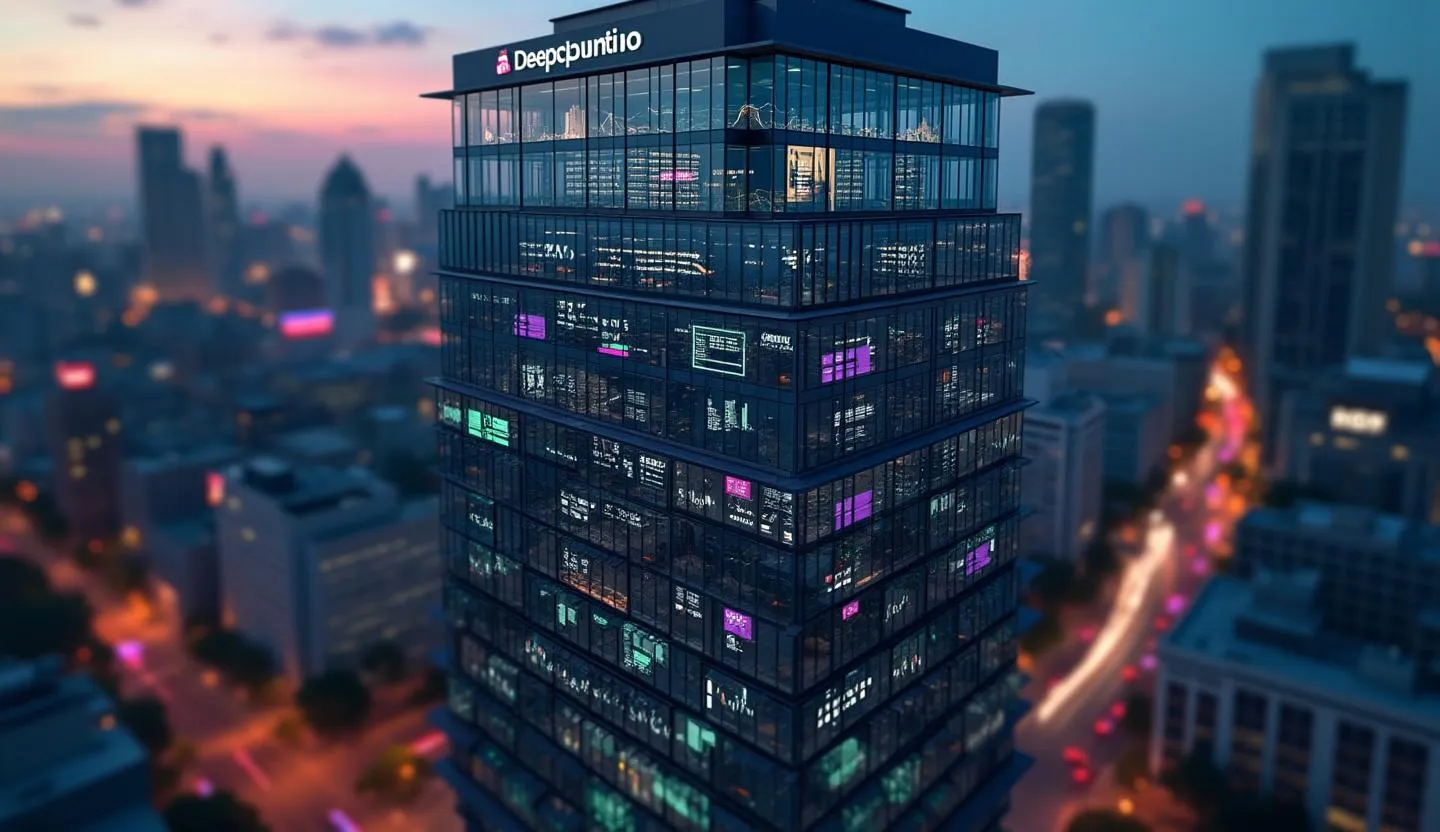BofA Steps Back on AMAT: What the Downgrade Signals for Investors
Applied Materials Inc. (AMAT), a global powerhouse in semiconductor manufacturing equipment, finds itself in the crosshairs this week as BofA Securities—a heavyweight in Wall Street analysis—downgrades the stock from "Buy" to "Neutral." The move comes with a new price target of $180, set against a recently battered share price near $162, after a tumultuous trading session marked by a $26 drop and a 13.9% intraday decline. In an environment where semiconductors are both an economic bellwether and a geopolitical flashpoint, such analyst actions become critical reference points for institutional and retail investors alike.
Key Takeaways
Potential Upside Return: With BofA's revised target at $180 and AMAT trading at $162, the implied upside is roughly 11%—a modest cushion compared to historical expectations for high-growth tech equities.
Major Price Shock: AMAT saw its highest single-day volume of the year as shares plummeted 13.9%, a move triggered by fresh concerns over guidance shortfalls and macro headwinds.
Recent News Impact: Headlines in the last 24 hours point to a $600 million guidance shortfall, slowing sales in China, and new tariff threats, all compounding the market’s anxiety.
Technical Weakness: RSI has plunged to 26.8, signaling an oversold condition. The current price is beneath both 20-day EMA and SMA, pointing to sustained technical pressure.
Analyst Authority: BofA’s broad sector coverage and global influence mean this downgrade carries significant weight and may shape broader sentiment.
The Significance of BofA’s Downgrade in Context
BofA Securities: A Market Mover’s Perspective
Bank of America Securities is renowned for its rigor in semiconductor sector research, frequently setting the tone for institutional positioning. Their new "Neutral" stance replaces a prior "Buy" rating, and the $180 target reflects a recalibrated view: upside is possible, but conviction is fading. BofA’s voice resonates because of its:
Extensive institutional client base
Strong history of early-cycle calls in tech hardware
Deep resources for channel checks and supply chain analysis
This downgrade, coming after a sharp earnings-related selloff, is significant. It telegraphs caution at a time when the sector faces multiple exogenous shocks—from China’s demand slowdown to possible U.S. tariff hikes. BofA’s influence and deep sector knowledge lend credence to a more measured stance on AMAT.
“Even with impressive recent earnings, macro headwinds and China exposure are prompting a more guarded outlook.” — BofA analyst note (source: Benzinga)
AMAT: Business Model and Sector Positioning
Applied Materials is the world’s largest supplier of equipment, services, and software for the manufacture of semiconductor chips. Its customer base spans leading foundries, memory makers, and display producers. The company is considered a bellwether for global chip capex cycles, with exposure to both cyclical swings and long-term secular trends in AI, cloud, and automotive electronics.
Business Model Highlights:
Core Revenue Drivers: Sales of deposition, etch, and inspection equipment to foundries (TSMC, Samsung, Intel) and memory firms (Micron, SK Hynix).
Service Revenue: Recurring revenue from installed base service contracts and spares—important for smoothing cyclicality.
Geographic Exposure: Heavy sales into Asia, notably China, which is both an opportunity and a risk amid trade tensions.
Innovation Edge: Significant annual R&D spend, enabling leadership in next-gen chipmaking technologies.
Stock and Financial Performance: A Tumultuous Period
Recent Stock Action:
The stock collapsed from $188 to $162, wiping out nearly $30 billion in market value in a single session.
This move came on record volume (21.2 million shares), underscoring institutional repositioning.
Technicals are deeply negative: the RSI at 26.8 signals a highly oversold condition, and the price is well below recent moving averages.
One-Year Context:
AMAT reached a high of $215.70 (October 15, 2024) and a low of $123.73 (April 7, 2025).
The stock is down significantly from recent highs, with sentiment negative (127 down days vs. 121 up days over the past year).
Average daily volatility is elevated at over 5%, reflecting uncertainty.
Financial Data (Recent Quarter):
[Exact quarterly metrics not provided in this summary, but recent headlines suggest revenue and earnings were strong, though guidance disappointed.]
The $600 million guidance shortfall, flagged in analyst notes, is the immediate trigger for the selloff.
Macro and News Flow: Tariffs, China, and Guidance Disappointments
Key News Headlines:
Guidance Shortfall: Benzinga reports analysts highlighting a $600 million gap in guidance, attributed to China slowdown and weak memory demand. Despite solid earnings, the future looks murkier.
Tariff Risks: MarketWatch notes new political threats of higher semiconductor tariffs, with potential for companies investing in the U.S. to dodge some impacts. This raises uncertainty for AMAT, given its exposure to Asia.
Market Movers: AMAT is featured prominently in broad market recaps due to its outsize price move, highlighting its role as a sector bellwether.
Technical Picture: Oversold, but Uncertain Path
The Relative Strength Index (RSI) at 26.8 is well into oversold territory, a technical signal that often precedes bounces—but not guarantees them.
The stock is trading below its 20-day EMA and near the lower Bollinger Band, suggesting recent selling pressure is intense.
However, this technical weakness is now aligned with fundamental caution from a major analyst, reducing the chance of a rapid reversal unless the macro picture improves.
What Does the 11% Potential Upside Mean?
With the stock at $162 and the new target at $180, investors face an 11% upside if BofA’s revised scenario plays out. For a sector as volatile as semiconductors, this is a modest return profile—highlighting that risk remains elevated and the path to recovery is uncertain.
Notably, the 11% target is below the stock’s recent 20-day EMA and historical highs, suggesting BofA sees limited room for a rebound in the near term.
Investors should weigh the risk/reward carefully, especially with macro headwinds and volatile earnings guidance in play.
DeepStreet’s Perspective: Uncovering the Subtleties
BofA's downgrade is not a blanket bearish call, but a sign of caution amid unresolved macro and sector-specific risks.
The technical oversold condition may attract short-term traders, but institutional money often waits for both fundamental and technical alignment.
Watch for further analyst notes in the coming days as the sector digests the magnitude of the guidance shortfall and any political developments on tariffs.
AMAT’s long-term innovation pipeline and service revenue base remain intact, but the next few quarters could be choppy.
Final Thoughts
Applied Materials’ sudden downgrade by BofA is a watershed moment for semiconductor investors, signaling that even best-in-class operators aren’t immune from macro and sector-specific shocks. With only modest upside to the new $180 target, and a technical setup that suggests more pain could be ahead, investors should tread carefully and keep a close eye on both policy developments and guidance updates from management.
“The semiconductor cycle is always volatile. Right now, there are more questions than answers.” — Industry veteran, quoted in MarketWatch
As always, DeepStreet will continue to monitor both the data and the narrative, seeking the signals that matter most in a noisy market landscape.

.svg)
.svg)
.svg)
.svg)

.svg)

.svg)
















